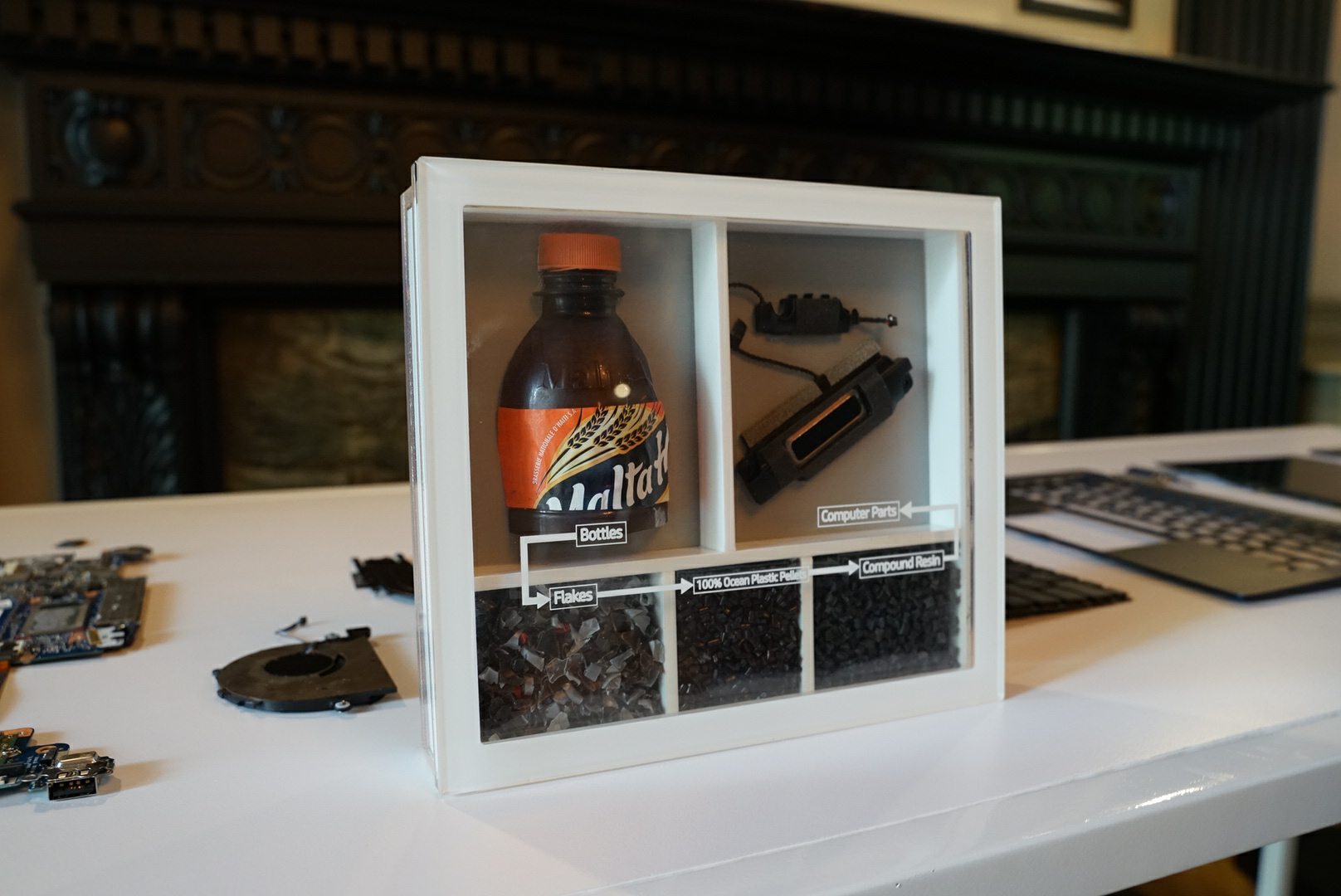The Elite Dragonfly is HP’s latest take on the mobile workforce. Badged under the enterprise-focused HP Elite brand, the Dragonfly is an Intel Athena certified 2-in-1 laptop with enterprise-grade durability and security.
Before we even begin to discuss the internals, the Dragonfly’s name bears ample significance. Whereas HP Elitebooks carry numerical designations, the Elite Dragonfly is just called the Dragonfly.
The distinction is to highlight the Dragonfly’s unique role as a hybrid between premium consumer ultrabooks and enterprise laptops. It’s also the first Intel Athena certified business laptop.
Despite being tied to the Elite series, the Dragonfly boasts a design that’s more stylish than industrious, featuring smooth, rounded contours. By switching to a magnesium alloy chassis, HP managed to compress its weight to 2.2 lbs. The metal shell is coated with an oleophobic coating to resist against fingerprints and add a dual-tone shine.
For the Elite Dragonfly’s keyboard, HP had to “re-engineer from the grounds up every stack of material” to reduce its weight by 26 per cent. In my brief typing test, the keyboard felt very spacious and springy. HP also noted that the microphone’s noise cancellation algorithm actively filters out the sound of keystrokes, resulting in a 20 per cent microphone noise reduction.

A pair of front-facing speakers flank the keyboard area–impressive given the space constraints. The speaker driver units are manufactured from recycled ocean plastic.

There are three display options to choose from: a 400 nit FHD display, 500 nit HDR display, and a 1,000 nit display with HP’s SureView privacy screen. With all three being touchscreens, the displays support HP’s active stylus. Drawing using the stylus felt natural and smooth, but I didn’t get a chance to test out its pressure sensitivity and angle detection.
Internal specifications include Intel 8th-gen vPro processors, up to 16GB of LPDDR3 RAM, and up to 2TB of NVMe SSD storage. The user can remove the rear panel and swap out the SSD as they please.
The processor choice may be baffling: how can a device with 8th-gen Intel processors be certified for Intel Athena, which mandates a 10th-gen Intel processor? According to an Intel spokesperson present at the event, the 10th-gen processor requirement only pertains to the consumer side. For the enterprise side, 8th-gen will be the standard while Intel irons out technicalities surrounding vPro, which will conclude in early 2020.
The Elite Dragonfly has an impressive array of ports for a device that’s only 1.6cm thick. Lined along its edges are an HDMI port, a Thunderbolt port, a USB-C port, a USB-A port, and an LTE SIM tray. It also supports Wi-Fi 6 connectivity. With that said, it lacks a microSD card slot–bummer for sure, but not a deal-breaker.
HP will actually ship the Elite Dragonfly in two battery configurations. The smaller, 38Wh cell provides up to 16 hours of battery. A bigger, heavier version will carry a beefier 56Wh cell, which HP claims can sustain up to 24 hours on the FHD display model.
Thus far, the Elite Dragonfly has been singing mostly the same tunes as a premium consumer laptop. What truly bridges the Elite Dragonfly with the enterprise side is its durability and security.
Firstly, it’s MIL-STD-810G certified, meaning that it can survive harsh vibrations, moisture, temperature, and operate at high-altitudes.
Secondly, it carries the same security enhancements as a standard Elitebook. HP’s endpoint security controller, combined with numerous protection software, guards the device from boot to desktop. In addition, it supports Windows Hello facial recognition, hardened fingerprint authentication, and Intel Trusted Platform Module (TPM) 2.0. HP also offers a SureView privacy display option that shields your data from prying eyes.

What’s also noteworthy is its integrated digital well-being software. The software can be set up to remind the user to take breaks and provide usage details.
In conclusion, the HP Elite Dragonfly certainly seems impressive. It’s got the gorgeous looks and portability a modern ultraportable, yet still touts the robust security and enterprise-focused features found on the more industrious models. It will be available starting Oct. 25 for US$1,549 (CA$2,053). Yes, that’s incredibly costly, which is why we can’t wait to get our hands on one for an in-depth review.







